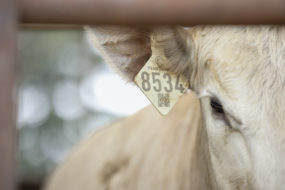“Animal production and health play critical roles in the sustainability and competitiveness of U.S. agriculture. They contribute significantly to the nation’s economy, global food production and food security,” said Dr. Sonny Ramaswamy, NIFA administrator. “These awards will expand knowledge and best practices to enhance animal health, lower production costs and minimize environmental impacts.”
Grants were awarded through the Animal Nutrition, Growth and Lactation program, part of the AFRI Foundational Program, which supports basic and applied research. Research areas include studying how animals use the nutrients in their feed; improving the use of traditional feed; exploring opportunities to use nontraditional feedstuffs; increasing the quality and efficiency of producing meat, milk and eggs; and mitigating metabolic disorders.
Fiscal year 2015 grants include:
- University of Arizona, Tucson, Arizona, $485,000
- University of California, Davis, California, $500,000
- University of Connecticut, Storrs, Connecticut, $150,000
- University of Delaware, Newark, Delaware, $500,000
- University of Illinois, Champaign, Illinois, $485,000
- Iowa State University, Ames, Iowa, $990,487 (two awards)
- North Dakota State University, Fargo, North Dakota, $20,000
- Dartmouth College, Hanover, New Hampshire, $500,000
- South Dakota State University, Brookings, South Dakota, $500,000
- University of Wisconsin, Madison, Wisconsin, $1,000,000 (two awards)
- Virginia Polytechnic Institute and State University, Blacksburg, Virginia, $500,000
- West Virginia University Research Corporation, Morgantown, West Virginia, $500,000
- University of Wyoming, Laramie, Wyoming, $500,000
Funded projects include a South Dakota State University project aimed at improving our knowledge of starch digestion in cattle, and an Iowa State University project designed to improve delivery and availability of nutrients and energy to pigs facing disease challenges, to minimize losses in growth rates and production efficiency. ![]()
—From USDA news release






